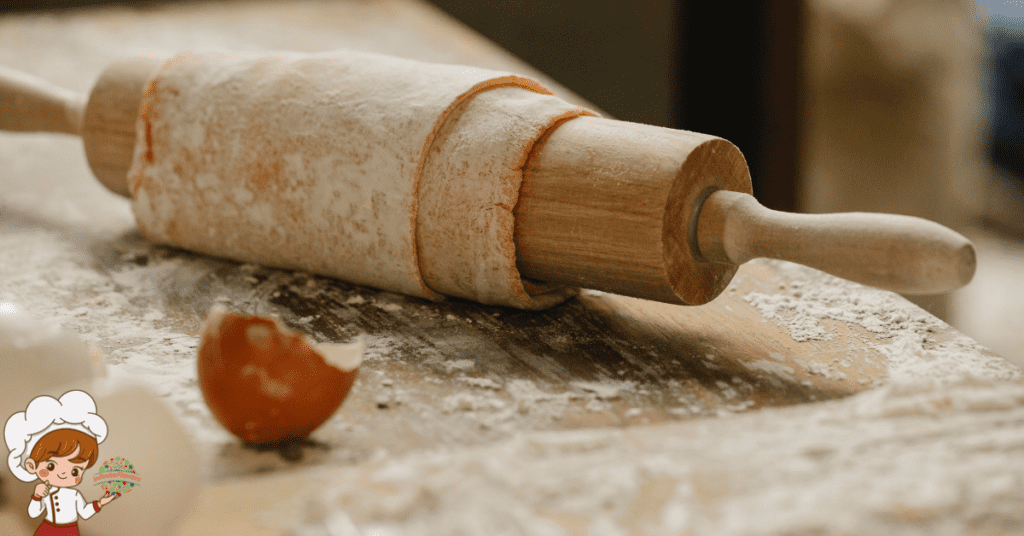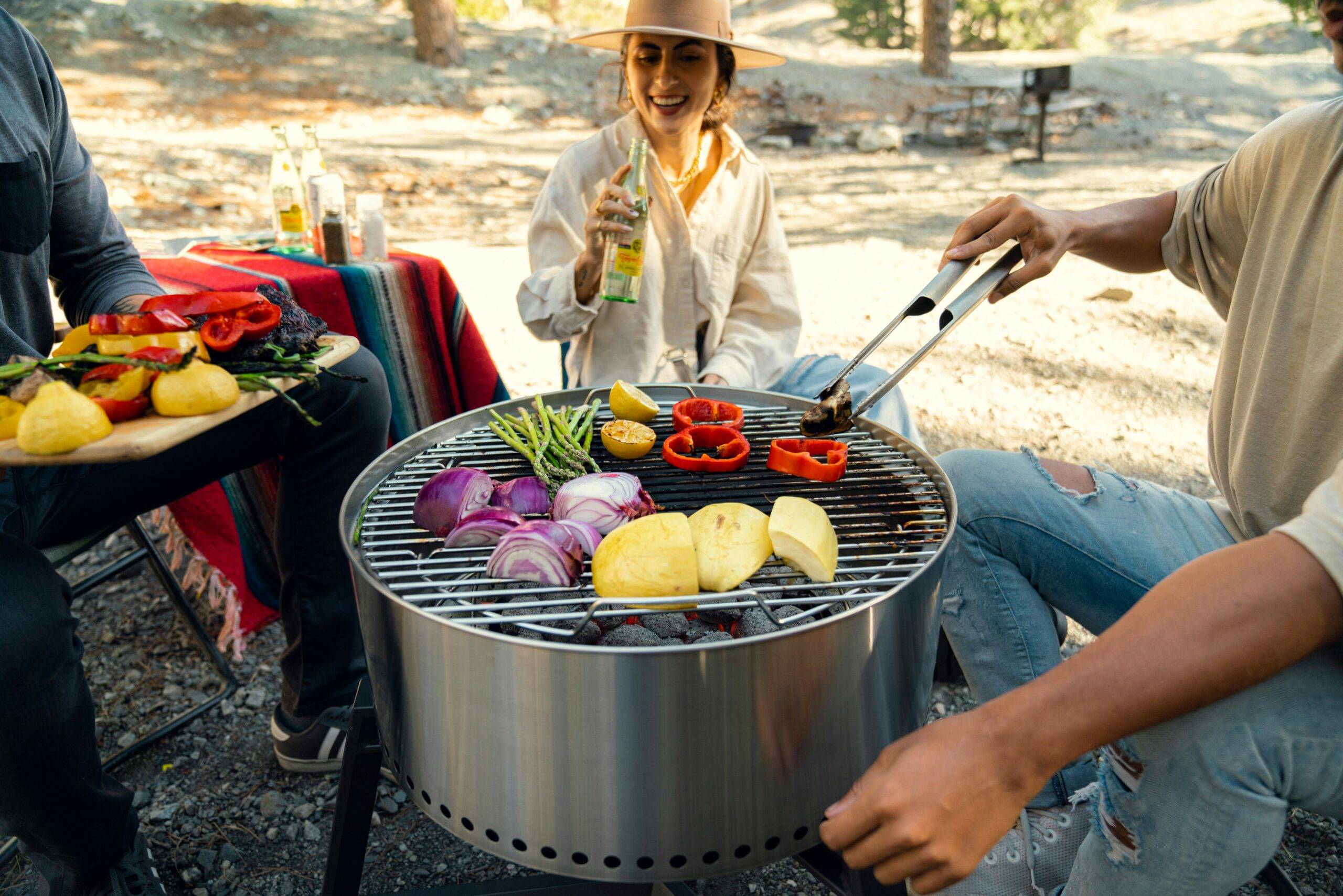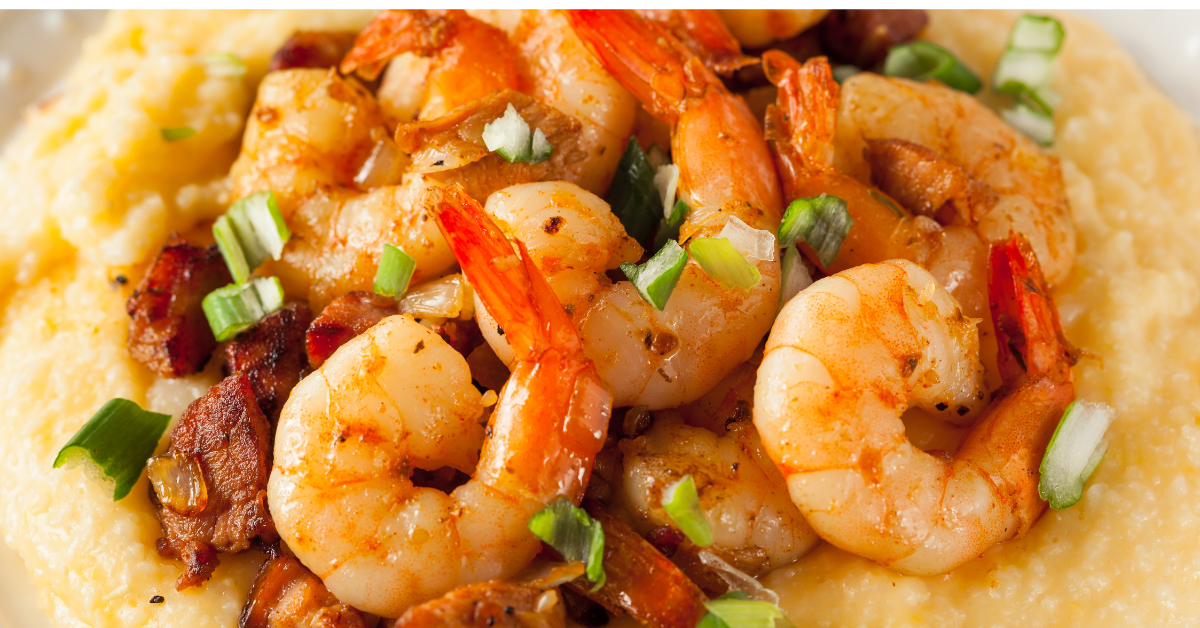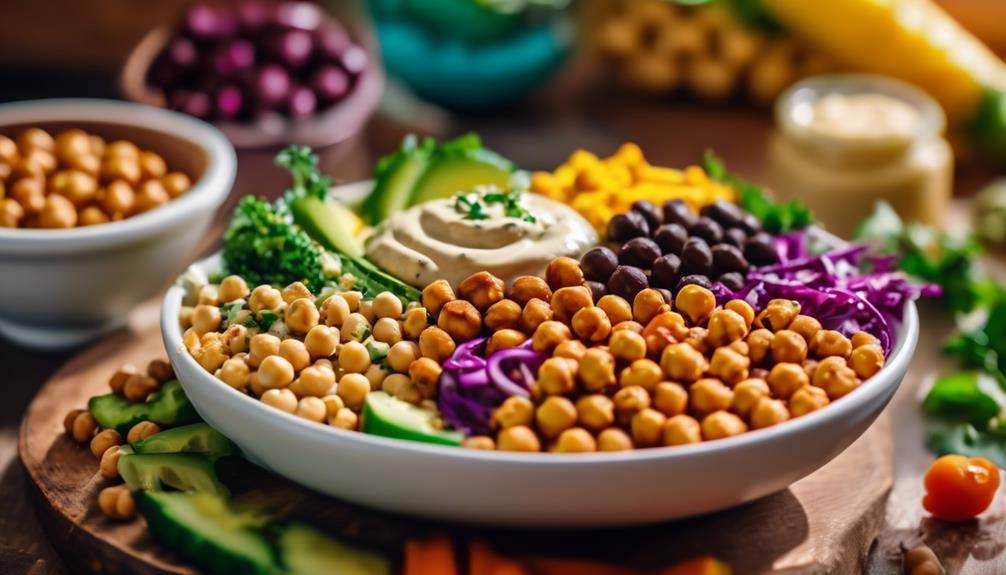The Best Rolling Pins With Handles Review

Best Rolling Pins With Handles Review; are essential for any baker, giving you better control and comfort while rolling dough. They come in various materials—wood, silicone, stainless steel, and marble—each offering unique benefits. Handles provide a firm grip, reducing strain on your wrists and ensuring even pressure. With sizes ranging from 15 to 20 inches, you can choose one that matches your baking needs. High-quality brands like OXO and KitchenAid offer durable options that can withstand regular use. Selecting the right rolling pin can make a significant difference in your baking experience, and there’s plenty more to reflect on about these essential tools.
Types of Rolling Pins
When it comes to rolling pins, you’ll find a variety of types designed to make your baking experience easier and more enjoyable. You’ll encounter classic vs modern rolling pins, each serving its purpose while offering unique benefits. Classic rolling pins, typically made of wood, are cylindrical and simple in design. They’ve been a staple in kitchens for generations, providing a reliable option for rolling out dough smoothly. You can easily find them in various sizes, making them versatile for any baking project.
On the other hand, modern rolling pins come with innovative features that cater to today’s baking needs. Many of these rolling pins utilize ergonomic designs, making them more comfortable to use for extended periods. For instance, some have a tapered shape, allowing for better control and less strain on your wrists. Others may incorporate materials like silicone, which can be non-stick, ensuring your dough doesn’t cling to the surface.
Whether you prefer the traditional charm of a classic rolling pin or the advanced functionality of modern designs, choosing the right one can greatly enhance your baking experience. Remember, it’s all about what feels comfortable in your hands and suits your specific baking style. So, take the time to explore different options and find the rolling pin that best aligns with your preferences. With the right choice, you’ll enjoy every moment spent in the kitchen, creating delicious treats.
Benefits of Handles
Handles on rolling pins offer significant advantages that can enhance your baking experience. When you’re working with dough, having a handle allows for better control and precision. You can easily apply the right amount of pressure without straining your wrists or hands. This is where handle ergonomics come into play. A well-designed handle fits comfortably in your hand, enabling you to roll out dough smoothly.
Another major benefit is the comfort grip that handles provide. Unlike traditional rolling pins, which can be hard to manage, those with handles allow you to maintain a firm hold while rolling. This means you won’t have to worry about the pin slipping from your grasp, which can lead to uneven dough thickness or even accidents in the kitchen. With a comfort grip, you can focus on your baking, knowing that you have a reliable tool at your disposal.
Moreover, handles make it easier to lift and reposition the rolling pin as needed. You can effortlessly maneuver it around the counter, which is particularly useful when working with larger batches of dough. This versatility is especially beneficial for those who enjoy baking frequently or experimenting with new recipes.
Material Options
Exploring material options for rolling pins can greatly affect your baking experience. When it comes to rolling pins with handles, you’ll find several materials that cater to different preferences and baking styles. Wood, for example, is traditional and offers a natural feel, making it easy to grip. It’s also heat resistant, which is particularly useful when rolling out dough that may be sensitive to temperature changes. However, keep in mind that wooden pins require regular maintenance to prevent cracking.
On the other hand, stainless steel pins are gaining popularity due to their durability and ease of cleaning. They often come with a sleek design and can withstand extensive durability testing, ensuring they last through countless baking sessions. Because they’re non-porous, you won’t have to worry about harboring bacteria, making them a hygienic choice.
Silicone rolling pins are also an option worth considering. They’re lightweight and flexible, which allows for easy maneuvering. Plus, they’re typically heat resistant and won’t stick to your dough as much as other materials would. This feature saves you time and effort during cleanup.
Lastly, there’s marble, which not only looks elegant but also maintains a cool temperature, ideal for working with delicate doughs like pastry. Each material has its strengths and weaknesses, so think about your baking habits and choose the one that fits your style best. Your rolling pin choice can make a significant difference in the kitchen!
Size Considerations
Choosing the right size for your rolling pin can greatly impact your baking efficiency and results. When it comes to rolling pin dimensions, consider the types of recipes you usually make. If you often roll out large sheets of dough for pizzas or pastries, a longer rolling pin—around 20 inches—might be your best bet. This size allows you to cover more area quickly, helping you achieve an even thickness without excessive effort.
On the other hand, if you’re mostly working with smaller batches or delicate dough, a 15-inch rolling pin could be more suitable. It offers better control and is easier to maneuver in tight spaces. Now, don’t forget about handle length. You want handles that are long enough to provide a comfortable grip but not so long that they become unwieldy. Ideally, handles should extend about 4 to 6 inches from the main body of the rolling pin. This length gives you enough leverage while ensuring you can easily roll without straining your wrists.
Lastly, consider your storage space. A larger rolling pin might be harder to store, so think about where you’ll keep it when it’s not in use. Ultimately, the size you choose will depend on your specific baking needs and preferences, so take some time to evaluate what works best for you. Finding the right rolling pin dimensions and handle length will enhance your baking experience and lead to better results.
Weight and Balance
Finding the right weight and balance in a rolling pin can greatly enhance your baking experience. When you choose a rolling pin that feels comfortable in your hands, it allows you to focus on perfecting your rolling technique rather than struggling with the tool. A well-balanced rolling pin helps distribute pressure evenly across the dough, ensuring consistent thickness and better dough consistency.
Heavier rolling pins, like marble or solid wood, can make it easier to roll out tough doughs, as their weight does much of the work for you. However, if you prefer a lighter pin, you might find it gives you more control and flexibility, especially for delicate pastry. The key is finding a pin that complements your style and the types of dough you work with.
Balance is equally essential; a pin that feels top-heavy can lead to uneven rolling and frustration. Ideally, the weight should be evenly distributed so you can use your wrists and arms effectively without straining. Experimenting with different weights can help you understand what works best for your personal rolling technique.
Grip Design Variations
When it comes to rolling pins, grip design variations can greatly impact your comfort and control while working with dough. You’ll find that different handle shapes can make a significant difference in how effectively you can roll out your dough. For instance, some rolling pins feature ergonomic designs that fit naturally in your hand, reducing strain during extended use. This is especially important if you’re tackling larger baking projects or rolling out tough doughs.
Traditional handles are often cylindrical, but you might prefer those with a more contoured shape that allows for a better grip. These ergonomic designs help distribute pressure evenly across your palm and fingers, giving you more control and reducing fatigue. If you’ve ever struggled with a slipping grip on a smooth handle, you know how frustrating it can be.
Additionally, some rolling pins come with textured or rubberized handles that provide extra traction. This can be particularly useful when your hands are a bit floury or greasy, ensuring you maintain a solid grip while working. Other variations include T-shaped handles, which allow for a different rolling motion and can feel more comfortable for some bakers.
Ultimately, choosing a rolling pin with the right grip design can enhance your baking experience. Test out a few different handle shapes to see which one feels best in your hands, and you’ll likely notice the difference in your dough preparation.
Cleaning and Maintenance
Once you’ve selected the perfect rolling pin with a grip that suits your baking style, it’s important to keep it in good condition through proper cleaning and maintenance. A well-maintained rolling pin not only enhances your baking experience but also guarantees longevity.
Start with basic cleaning techniques. After each use, wipe down your rolling pin with a damp cloth to remove flour and dough residue. Avoid soaking it in water, as this can warp the wood or damage the finish. If you’ve used it with particularly sticky dough, a gentle scrub with mild soap and a soft sponge can help. Rinse it quickly, then dry it immediately with a clean towel to prevent moisture absorption.
For wooden rolling pins, applying mineral oil every few months is a great maintenance tip. This helps to condition the wood and prevent cracking. Simply rub a small amount onto the surface, let it absorb, and wipe off any excess. Avoid using cooking oils, as they can go rancid over time.
If your rolling pin starts to smell or shows signs of wear, consider sanding it lightly with fine-grit sandpaper, then reapply mineral oil. Finally, store your rolling pin in a cool, dry place, away from direct sunlight. By following these cleaning techniques and maintenance tips, you’ll guarantee your rolling pin remains a trusty companion in all your baking adventures.
Price Range Overview
Rolling pins with handles come in a variety of price ranges that cater to different budgets and preferences. You’ll find options ranging from as low as $10 to over $100. If you’re on a tight budget, you’ll still be able to find decent rolling pins made from materials like wood or plastic. These budget-friendly options often perform well for everyday baking tasks, making them a great choice for casual home bakers.
As you move up in price, you’ll notice that the quality and durability of the materials improve. Stainless steel, marble, and high-end wood rolling pins offer a more luxurious experience and often come with features like ergonomic handles for added comfort. These higher-priced options can be worth the investment, particularly if you’re an avid baker or plan to use your rolling pin frequently.
Market trends show that there’s a growing demand for specialty rolling pins, such as those designed for specific tasks like pastry or fondant. These can come at a premium price but often provide unique designs and functionality that justify the cost.
When considering your purchase, think about how often you’ll use the rolling pin and what types of baking projects you’ll tackle. Balancing your budget considerations with your baking needs will help you find the perfect rolling pin that fits your kitchen and enhances your culinary creations.
Top Brands Reviewed
While searching for the perfect rolling pin with handles, you’ll encounter several reputable brands that stand out regarding quality and design. Each brand offers unique features that cater to different user preferences, making it essential to conduct a thorough brand comparison.
One popular choice is the OXO brand, known for its ergonomic designs and comfortable grips. OXO rolling pins often feature a non-stick surface, making it easier to roll out dough without sticking. Many users appreciate the thoughtful design elements that enhance usability, particularly if you’re working with sticky doughs.
Another brand to evaluate is KitchenAid, which combines classic aesthetics with modern functionality. Their rolling pins often come in a variety of colors and materials, allowing you to select one that complements your kitchen décor. Users often highlight the durability and weight of KitchenAid rolling pins, making them great for heavy-duty tasks.
If you’re looking for something more traditional, the Marble brand offers rolling pins made from high-quality marble. These pins not only look stunning but also maintain a cool surface, ideal for working with pastry. Users frequently rave about how well marble retains temperature, ensuring your dough doesn’t warm up too quickly.
Lastly, the Joseph Joseph brand is known for its innovative designs and space-saving solutions. Their rolling pins often come with adjustable thickness rings, providing precision for different types of dough. Users love the versatility and ease of use, making Joseph Joseph a strong contender for those who value functionality.
In the end, each brand has its strengths, so evaluate your own preferences before making a choice.
User Experiences
When it comes to using rolling pins with handles, user experiences vary widely based on personal preferences and baking styles. Some bakers swear by the ease of maneuverability that handles provide, while others prefer a more traditional, streamlined approach. User feedback often highlights how comfortable the handles feel during extended use. You might find that a well-designed handle reduces hand fatigue, especially if you’re rolling out dough for several recipes in one sitting.
Your handle preferences can greatly impact your baking experience. For instance, some users appreciate thicker handles for a better grip, which can lead to more control over rolling. Others might opt for slimmer handles that allow for a more delicate touch, particularly when working with tender doughs. You’ll likely notice that the material of the handles also plays a role; wooden handles often provide a warm, classic feel, while silicone or metal options can offer a modern twist.
Many bakers report a learning curve when adapting to a rolling pin with handles. You might initially struggle with the balance and pressure, but with practice, you’ll find your rhythm. Overall, it seems that those who take the time to explore different handle styles usually end up with a favorite that enhances their baking process. With the right rolling pin, you’ll find that your dough rolls out evenly and effortlessly, making your baking sessions more enjoyable.
Common Mistakes
When choosing a rolling pin with handles, you might overlook the material quality, thinking all options are the same. Ignoring proper maintenance can also lead to a shorter lifespan for your rolling pin. Let’s explore these common mistakes so you can make the best choice for your baking needs.
Overlooking Material Quality
Many home bakers often overlook the importance of material quality when choosing rolling pins with handles, thinking that any option will suffice. However, the material directly affects your baking experience and the final product. Rolling pins made from high-quality materials, like hardwood or marble, provide better durability and performance compared to cheaper alternatives.
When you opt for a well-crafted rolling pin, you’ll notice how the design aesthetics come into play. A beautifully designed pin not only looks appealing in your kitchen but also enhances your enjoyment while baking. In addition, ergonomic features are essential for comfort during extended use. A rolling pin that fits well in your hands with smooth handles can notably reduce strain, allowing you to roll out dough effortlessly.
Don’t compromise on material quality; it can make a world of difference. Investing in a premium rolling pin may seem pricey at first, but its longevity and efficiency will pay off in the long run. By prioritizing material quality, you’ll elevate your baking game, ensuring consistent results and a more enjoyable experience in the kitchen. So, take your time to choose wisely!
Ignoring Proper Maintenance
Neglecting proper maintenance of your rolling pin can greatly impact its performance and lifespan. If you want to guarantee rolling pin longevity, you need to adopt a few simple maintenance tips. First, always clean your rolling pin after each use. A damp cloth or sponge works wonders to remove any dough residue, and it helps prevent bacteria buildup. Avoid soaking your rolling pin in water, as excessive moisture can warp or crack the wood.
Next, consider applying a food-safe mineral oil to your wooden rolling pin every few months. This helps keep the wood hydrated and prevents it from drying out, which can lead to cracks. Don’t forget to store your rolling pin properly; keeping it in a dry, cool place away from direct sunlight will help maintain its integrity.
Lastly, be mindful of how you use your rolling pin. Avoid pressing down too hard on delicate surfaces, as this can lead to scratches and damage. By following these maintenance tips, you’ll not only enhance your rolling pin’s performance but also extend its lifespan, guaranteeing it remains a reliable tool in your kitchen for years to come.
Tips for Choosing
Choosing the right rolling pin with handles can greatly enhance your baking experience, so consider a few key factors before making a decision. First, think about the different rolling pin styles available. You’ll find options like French pins, which are tapered and allow for easy maneuverability, and traditional pins, which are cylindrical with handles that provide a solid grip. Each style has its advantages, depending on your baking techniques and comfort preferences.
Next, consider the material of the rolling pin. Wooden pins offer a classic feel and great control, while marble or silicone options can provide a smoother surface that prevents sticking. If you often work with delicate doughs, a heavier pin might give you the stability you need, whereas lighter pins can be easier to handle for longer periods.
Don’t forget to assess the size of the rolling pin as well. A longer pin can help you roll out larger pieces of dough, but it may also be more cumbersome to store. On the other hand, a smaller pin is easier to manage in tight spaces but might require more effort for larger tasks.
Frequently Asked Questions: Best Rolling Pins With Handles Review
Can I Use a Rolling Pin Without Handles Effectively?
You can use a rolling pin without handles effectively, but it may lack some precision. Handle benefits include better grip and leverage, making the effectiveness comparison lean towards handled options for more efficient rolling and control.
Are There Rolling Pins Specifically Designed for Certain Dough Types?
Yes, there are specialty rolling pins designed for specific dough types. These tools enhance your baking experience, whether you’re working with pie crusts, pasta, or cookie dough, ensuring you achieve the perfect thickness and consistency every time.
How Do I Choose the Right Handle Material for My Rolling Pin?
When choosing a handle material for your rolling pin, consider comfort and durability. Wood offers warmth but can wear down, while stainless steel is sturdy. Prioritize what feels best in your hands during use.
What Is the Best Way to Store a Rolling Pin With Handles?
For proper rolling pin storage, keep it in a drawer or hang it up. This protects the handles from damage and guarantees easy access. Avoid stacking items on top to maintain its shape and integrity.
Do Rolling Pins With Handles Require Special Care Compared to Traditional Ones?
Rolling pins with handles don’t need special care, but handle maintenance is key. Regular cleaning and proper rolling technique guarantee longevity. Just be gentle and avoid soaking, and your pin will serve you well.
Conclusion
In summary, choosing the right rolling pin with handles can greatly enhance your baking experience. With various types, materials, and sizes available, it’s crucial to reflect on what works best for you. Remember to weigh the benefits of handles for improved control and comfort. By avoiding common mistakes and keeping our tips in mind, you’ll be well-equipped to find the perfect rolling pin that meets your needs and helps you create delicious baked goods with ease.








